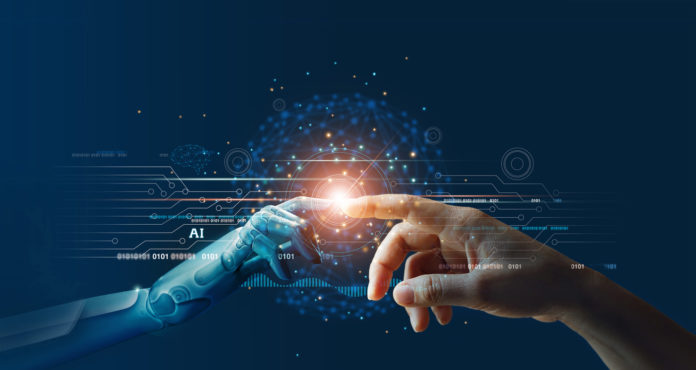An accurate medical diagnosis influences the effectiveness of the treatment. Besides, it allows foreseeing possible side effects and speeding up the recovery with relevantly calibrated medication.
Statistics show that 80% of cancer cases and 40% of diabetes will benefit from early AI detection in 2024. Such figures state the necessity of further development and application of AI technologies in medical diagnosis.
AI in medical diagnosis
AI technologies can help medical experts diagnose patients in three ways:
- acceleration of the initial diagnostics
- fast and accurate test and image interpretation
- deep analysis of similar cases
Radiology
It was the first medical branch to start actively using digital technologies. When AlexNet appeared in 2012, machines learned to recognize images. Combining the image recognition feature with cloud storage and automation made the solution essential for radiologists.
Radiology can now benefit from various AI-based assistants.
- Mammogram readers provide another competent opinion for human experts.
- Battery-powered X-ray stations detect tuberculosis and pneumonia in remote areas of Africa.
- AI-powered image recognition systems might interpret pictures taken with minimal radiation doses and notice even the slightest alterations to the norm.
- Ultrasound systems with AI features can check the weight of the fetus, the quality, and the amount of amniotic fluid.
- AI-featured stethoscopes can aid with heart disease diagnosis.
- Innovative MRI tools allow medical providers to cut costs. Low-field magnets are portable, so they make scans at the bedside of a patient and do not require a separate room. Conversely, high-field magnets make cancer scans faster, and integrated AI generates an immediate description, reducing the price for patients.
Ophthalmology
AI technologies assist in measuring retinal biomarkers, such as their thickness and fluid volume. The analysis and examination usually take four times less time than when using traditional tools. It has become possible due to the cloud storage of the data. Some processes happen simultaneously: e.g., while uploading part of the data, experts may review the other part.
Dermatology
Swedish developers are working on the AI-driven Dermalyser, which can detect malignant melanomas and prevent the risk of skin cancer. The initial results of the clinical trial demonstrate high diagnostic precision. The AI algorithm compares the image of a patient’s melanoma with a relevant dataset. Deep learning allows for accurate diagnosis.
Dentistry
Machine learning tools in dentistry also help with image recognition and interpretation. Computers can identify even a slight change in the gray shade on the X-ray. Therefore, the AI vision is more attentive to details than the human eye. Thousands of images and, based on them, conclusions serve as the input data for the machine learning technology. For the dentist, it is like consulting a pool of colleagues simultaneously.
Psychiatry
EarliTec Diagnostics has come up with a test that allows for the detection of autism in children over 16 months old. Children watch a short video while a special AI-based tool records their eye movement. Children with autism concentrate on the video differently from other children. The latest research shows that autism is diagnosed in 1 out of 36 children, which is a matter of great concern. The earlier parents and doctors know about the issue, the better for the child.
The value of impeccable data
From the above-mentioned facts, we conclude that data is the key to flawlessly operating technologies. Computers make accurate diagnoses only if the quality of the input data is high. Here is where BI and data analytics step in. Carefully gathered and conveniently stored information enables doctors to examine the health condition effectively and provide a personalized treatment plan for their patients.
Medical data can be arranged in traditional relational databases or in more sophisticated healthcare analytics databases. From my experience, medical centers today opt for software solutions that combine the functionality of the CRM platform with BI.
EMR and EHR
Electronic medical records (EMRs) store digital versions of medical histories, test results, and all other documents within a medical provider.
Electronic health records (EHRs) are similar systems with the opportunity for a more holistic approach to each patient. EHRs contain the data from all hospitals, clinics, nursing homes, and other medical institutions a patient visited. Thus, by addressing an EHR, doctors may receive a complete medical history and consider more facts while diagnosing.
As one of our clients confirmed, customized software managed to relieve the staff from tiresome paperwork, minimize human mistakes, and accelerate assignments.
Even though most businesses realize the necessity of modernizing their datasets and implementing AI tools, they do not evaluate the readiness of the company for the change.
Any dramatic improvements need to be eaten in bites. From my experience, a medical provider should assess their business and technological triggers first.
- Does the current EHR or EMR cope with recent demands?
- Is it possible to upgrade the legacy system and make it compatible with business requirements?
- Is the upgrade affordable?
- What are the risks of postponing the upgrade?
Discussing the opportunities and risks will highlight to the medical provider the further steps that should be taken.
Future plans for AI-powered medical diagnosis
AI features such as data extraction, missing information alerts, summarization, and highlighting the main issues make EHRs eligible to assist medical experts. Further application of multimodal medical data leads to the development of explainable AI. It is a system that clarifies to non-developers how to cooperate with AI-powered tools and interpret their output. Within a medical organization, it allows more medical staff to deal with new tools and systems, increasing their skills. The trend reduces the necessity of hiring expensive experts.
Another tendency is the development of clinical decision support systems (CDSS). Simply saying, it is a system that not only helps with the diagnosis but also consults regarding the treatment plan. It includes various alerts, reminders, and guidelines for the personnel to facilitate their routine tasks.
Final thoughts
When we talk about AI in medical diagnosis, perspectives for its development are limitless. However, any business owner has to understand that technology for the sake of technology is a deadlock strategy. Implementing AI tools starts with clear data that the algorithms will learn from.
About the author:
 Dmitry Baraishuk is a partner and Chief Innovation Officer at the software development company Belitsoft (a Noventiq company) with 19+ years of expertise in digital healthcare, custom e-learning software development, and Business Intelligence (BI) implementation.
Dmitry Baraishuk is a partner and Chief Innovation Officer at the software development company Belitsoft (a Noventiq company) with 19+ years of expertise in digital healthcare, custom e-learning software development, and Business Intelligence (BI) implementation.










